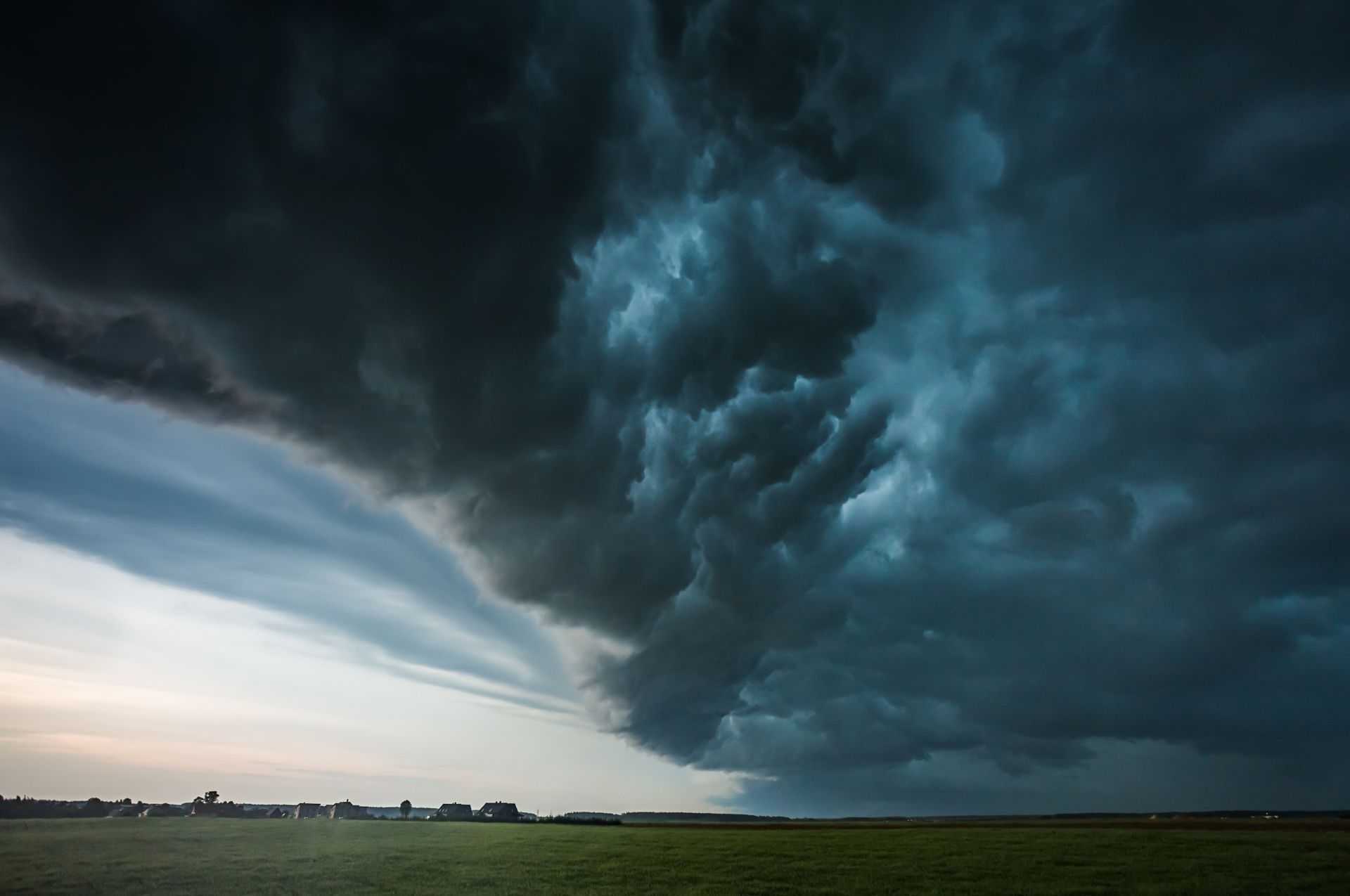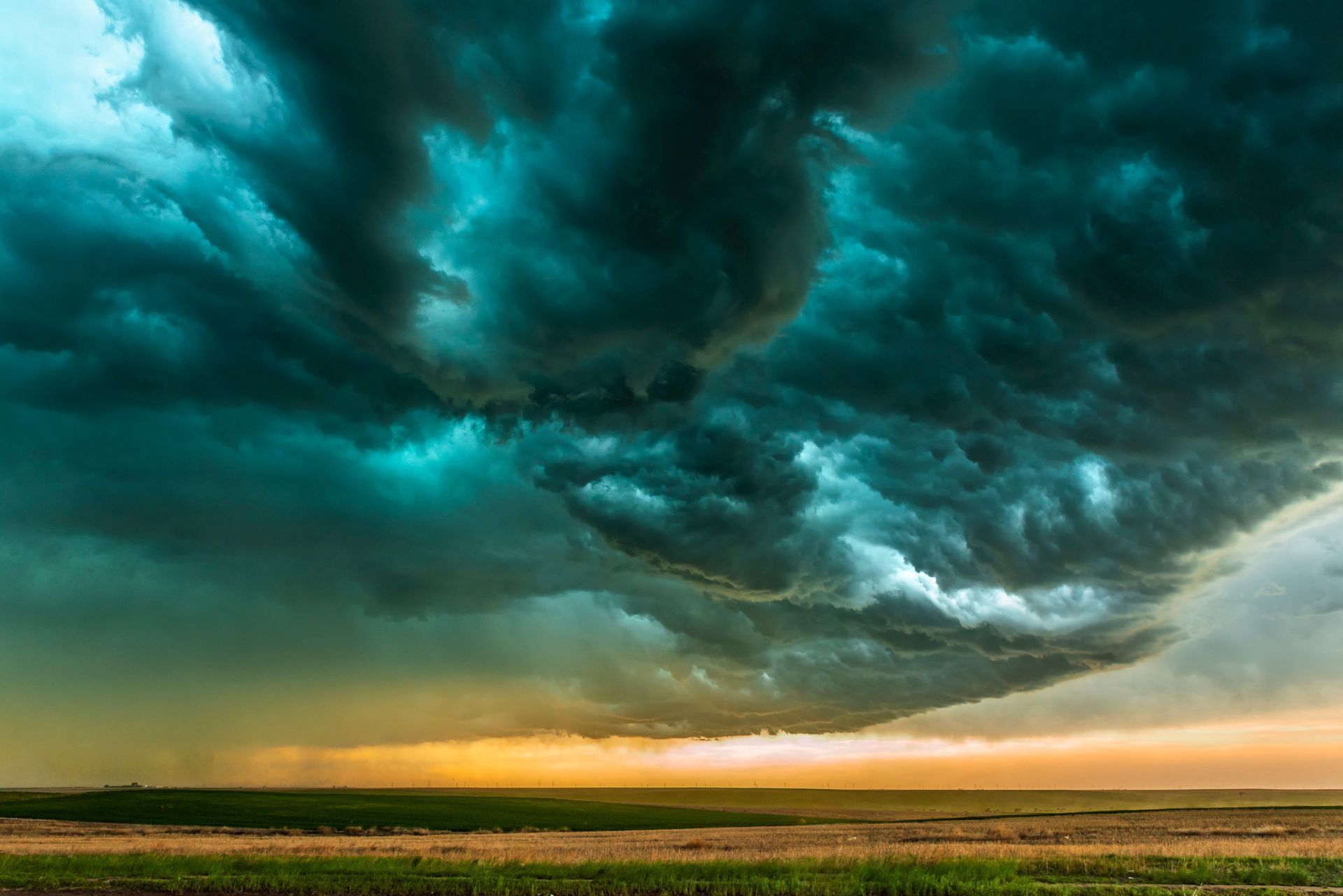
Top 3 Recommended Policies
Windstorms can cause significant damage to homes and properties, particularly in states like Connecticut that experience severe weather conditions. Understanding windstorm insurance is crucial for homeowners and property owners alike. This article delves into the essentials of windstorm insurance in Connecticut, covering what it is, how it works, and why it is vital for safeguarding your property.
What is Windstorm Insurance?
Windstorm insurance is a specialized type of property insurance that covers damage caused by high winds, including those from hurricanes, tornadoes, and severe storms. In Connecticut, where coastal areas are susceptible to hurricanes and nor'easters, having this insurance can be a financial lifesaver. The unique geography of Connecticut, with its extensive shoreline and varying topography, makes it particularly vulnerable to the destructive forces of nature, emphasizing the importance of this type of coverage for homeowners.
Types of Coverage
Windstorm insurance typically falls under two categories: standard homeowners insurance policies and separate windstorm policies. While standard homeowners insurance may cover some wind damage, it often comes with limitations. A separate windstorm policy can provide more comprehensive coverage, especially for properties in high-risk areas. For instance, homeowners in coastal towns like New Haven or Old Saybrook may find that a standalone windstorm policy offers better protection against the specific risks they face compared to a standard policy.
Many homeowners may find that their standard policy excludes wind damage or has specific deductibles that apply to wind-related claims. Understanding these nuances is vital for ensuring adequate protection. Additionally, some policies may have different coverage limits based on the severity of the wind event, which can leave homeowners vulnerable if they are not fully aware of their policy details. Consulting with an insurance agent who specializes in windstorm coverage can help clarify these complexities and ensure that homeowners select the right policy for their needs.
Why is Windstorm Insurance Important?
Windstorms can lead to extensive property damage, resulting in costly repairs. Without appropriate insurance, homeowners may face significant out-of-pocket expenses. Windstorm insurance not only covers structural damage but can also include coverage for personal belongings, additional living expenses if you need to relocate temporarily, and debris removal. This comprehensive approach to coverage is crucial, as the aftermath of a windstorm can leave homeowners not only with damaged roofs and broken windows but also with the daunting task of clearing away fallen trees and other debris that can pose safety hazards.
Moreover, in Connecticut, where the risk of severe storms is prevalent, having windstorm insurance can provide peace of mind. It ensures that homeowners are financially protected against unpredictable weather events. The emotional toll of experiencing a severe storm can be overwhelming, and knowing that you have the right insurance in place can alleviate some of that stress. Furthermore, as climate change continues to influence weather patterns, the frequency and intensity of windstorms may increase, making it even more critical for homeowners to reassess their insurance needs regularly. Staying informed about local weather trends and potential risks can empower homeowners to make proactive decisions regarding their windstorm insurance coverage.

Understanding the Risks in Connecticut
Connecticut's geographical location makes it vulnerable to various windstorms, including hurricanes and nor'easters. Understanding these risks is essential for homeowners when considering windstorm insurance.
Hurricanes and Tropical Storms
During hurricane season, which runs from June to November, Connecticut can experience strong winds and heavy rainfall from tropical storms and hurricanes. These storms can lead to widespread damage, particularly in coastal areas. Homeowners should be aware that the intensity of these storms can vary, and even a less severe storm can cause significant damage. For instance, even a Category 1 hurricane can produce winds exceeding 74 miles per hour, capable of uprooting trees and damaging roofs. Additionally, the accompanying storm surge can inundate low-lying areas, leading to flooding that can compromise the structural integrity of homes and businesses alike.
Nor'easters
Nor'easters are another significant weather phenomenon that can impact Connecticut. These storms can bring heavy snow, rain, and strong winds, often resulting in power outages and property damage. Windstorm insurance is crucial for protecting homes from the impacts of these winter storms, which can be just as damaging as hurricanes. The unique combination of cold air from the north and warm, moist air from the Atlantic can create conditions conducive to these powerful storms, leading to blizzard-like conditions that can paralyze communities. In some instances, snowfall can accumulate to several feet, causing roofs to collapse under the weight and making roads impassable for days. Homeowners should also consider the potential for ice accumulation, which can add additional weight to trees and power lines, further increasing the risk of outages and damage.
How to Obtain Windstorm Insurance in Connecticut
Obtaining windstorm insurance in Connecticut involves several steps. Homeowners should take the time to research and understand their options to ensure they choose the policy that best fits their needs.
Assessing Your Property's Risk
The first step in obtaining windstorm insurance is assessing the risk level of your property. Factors such as location, age of the home, and building materials can influence the risk of wind damage. Homes located near the coast or in areas prone to severe storms may require more comprehensive coverage. Additionally, homeowners should consider the elevation of their property, as lower-lying areas may be more susceptible to flooding, which can accompany strong winds. Understanding these factors can help homeowners make informed decisions about the level of coverage they need and the potential costs involved.
Shopping for Policies
Once you understand your property's risk, it's time to shop for policies. Homeowners should compare quotes from different insurance providers to find the best coverage at a competitive price. It's essential to read the fine print and understand what is covered and what is not, including any exclusions or limitations. In Connecticut, some insurers may offer specialized windstorm policies or endorsements that can be added to a standard homeowners' policy. Additionally, it may be beneficial to consult with an insurance agent who specializes in windstorm coverage, as they can provide valuable insights into the nuances of various policies and help navigate the often complex insurance landscape. Furthermore, consider the financial stability and reputation of the insurance company, as this can impact the reliability of claims processing in the event of a storm.
Factors Affecting Windstorm Insurance Premiums
The cost of windstorm insurance can vary widely based on several factors. Understanding these factors can help homeowners make informed decisions when purchasing coverage.
Location
The geographical location of your property plays a significant role in determining insurance premiums. Homes situated in high-risk areas, such as coastal regions, typically face higher premiums due to the increased likelihood of windstorm damage. Additionally, proximity to bodies of water can exacerbate risks, as storm surges and flooding may accompany high winds. Insurers often utilize detailed risk assessment models that take into account historical weather patterns and the frequency of severe storms in a given area, which can lead to substantial differences in premium costs between neighboring regions.
Building Characteristics
The age, design, and materials used in the construction of a home can also impact insurance costs. Newer homes built to modern building codes may qualify for lower premiums, while older homes may be considered higher risk due to outdated construction practices. For instance, homes with reinforced roofs and impact-resistant windows are often viewed more favorably by insurers, as they are less likely to sustain severe damage during a windstorm. Furthermore, the overall layout of the property, including the presence of landscaping or nearby structures that could act as windbreaks, can also influence the risk assessment and subsequently the insurance premium.
Claims History
Another critical factor that insurers consider is the claims history associated with the property. If a home has a record of frequent claims related to windstorm damage, this can lead to higher premiums, as it indicates a higher risk to the insurer. Homeowners who have maintained a clean claims history may be eligible for discounts, highlighting the importance of proactive maintenance and risk management. Additionally, some insurance companies offer incentives for installing storm-resistant features or for participating in community programs aimed at reducing overall windstorm risk, which can further help in lowering premiums.
Coverage Options
The specific coverage options selected by a homeowner can also significantly affect the cost of windstorm insurance. Policies that offer comprehensive coverage, including additional living expenses and replacement cost coverage, will typically come with higher premiums compared to basic policies. Homeowners should carefully evaluate their needs and consider factors such as the value of their property and personal belongings when choosing coverage levels. Moreover, understanding the deductibles associated with different policies is essential, as higher deductibles can lead to lower premiums but may result in out-of-pocket expenses during a claim. By balancing coverage options and deductibles, homeowners can tailor their insurance to fit both their risk tolerance and budget.

Understanding Deductibles
Deductibles are an essential aspect of windstorm insurance that homeowners must understand. A deductible is the amount a policyholder must pay out of pocket before the insurance coverage kicks in. This financial mechanism not only helps insurance companies manage risk but also encourages homeowners to take proactive measures in safeguarding their properties. Understanding how deductibles work can empower homeowners to make informed decisions about their insurance policies and financial planning.
Types of Deductibles
Windstorm insurance policies often have specific deductibles for wind-related claims, which can differ from standard homeowners insurance deductibles. These deductibles may be a flat dollar amount or a percentage of the home's insured value. For instance, a policy might specify a $1,000 deductible for hail damage while imposing a 2% deductible on the home’s total insured value for hurricane-related claims. Homeowners should carefully review their policy to understand how deductibles will affect their coverage. Additionally, it is crucial to be aware of any regional variations in deductible structures, as these can be influenced by local climate patterns and historical data on windstorm occurrences.
Choosing the Right Deductible
When selecting a deductible, homeowners should consider their financial situation and risk tolerance. A higher deductible may lower monthly premiums but can lead to significant out-of-pocket expenses in the event of a claim. Conversely, a lower deductible may provide more immediate financial relief but could result in higher premium costs. Homeowners should also assess their property's vulnerability to windstorms, as areas prone to severe weather may warrant a different deductible strategy. Moreover, it can be beneficial to consult with an insurance agent who can help navigate the complexities of windstorm insurance and tailor a policy that aligns with both the homeowner's budget and their risk management goals. This personalized approach can ensure that homeowners are adequately protected without overextending themselves financially.
Claims Process for Windstorm Insurance
Understanding the claims process is crucial for homeowners who may need to file a claim after a windstorm. Knowing what to expect can help streamline the process and ensure that claims are handled efficiently.
Documenting Damage
After a windstorm, the first step in filing a claim is to document the damage. Homeowners should take photographs and videos of the affected areas and create a detailed list of damaged property. This documentation will be essential when submitting a claim to the insurance company. It is advisable to capture images from multiple angles and include close-ups of specific damage, such as broken windows, roof shingles, or downed trees. Additionally, homeowners should note the date and time of the storm, as well as any relevant weather reports, to provide context for the damage incurred.
Filing the Claim
Once the damage is documented, homeowners should contact their insurance provider to initiate the claims process. It's important to provide all necessary information and documentation to support the claim. Insurance companies may send an adjuster to assess the damage and determine the payout amount. During this assessment, homeowners should be present to answer any questions the adjuster may have and to point out specific areas of concern. It is also beneficial to keep a record of all communications with the insurance company, including names, dates, and details of conversations, to ensure a smooth process and to have a reference in case of disputes.
Understanding Policy Coverage
Before filing a claim, it is essential for homeowners to thoroughly review their windstorm insurance policy to understand what is covered. Policies can vary significantly in terms of coverage limits, deductibles, and exclusions. For instance, some policies may cover only certain types of wind damage or may have specific clauses regarding the age and condition of the home prior to the storm. Homeowners should also be aware of any deadlines for filing a claim, as these can differ by provider and state regulations. Familiarizing oneself with the policy details can prevent surprises down the line and help homeowners make informed decisions during the claims process.
Tips for Reducing Windstorm Insurance Costs
While windstorm insurance is essential for protecting property, homeowners can take steps to reduce their insurance costs. Here are some practical tips to consider.
Improve Home Resilience
Investing in home improvements that enhance wind resistance can lead to lower insurance premiums. This may include installing impact-resistant windows, reinforcing roofs, and securing outdoor structures. Insurance providers often offer discounts for homes that demonstrate increased resilience to wind damage.
Bundle Policies
Many insurance companies offer discounts for bundling multiple policies, such as homeowners and auto insurance. Homeowners should inquire about bundling options to potentially save on overall insurance costs.
Common Exclusions in Windstorm Insurance Policies
Understanding what is not covered by windstorm insurance is just as important as knowing what is included. Homeowners should be aware of common exclusions to avoid surprises when filing a claim.
Flood Damage
One of the most significant exclusions in windstorm insurance is flood damage. While wind can cause flooding, standard windstorm policies typically do not cover water damage from flooding. Homeowners in flood-prone areas should consider purchasing a separate flood insurance policy.
Negligence and Maintenance Issues
Insurance policies often exclude damage resulting from negligence or lack of maintenance. Homeowners are responsible for maintaining their property and ensuring that it is in good condition. Failure to address maintenance issues may result in denied claims.
Conclusion
Windstorm insurance is a critical component of property protection for homeowners in Connecticut. With the state's vulnerability to severe weather events, understanding the intricacies of windstorm insurance can help homeowners make informed decisions. From assessing risk to navigating the claims process, being well-informed is the key to safeguarding your investment.
Ultimately, homeowners should take the time to research their options, compare policies, and understand the coverage they need. By doing so, they can ensure that they are adequately protected against the unpredictable forces of nature.
Contact Us
Phone
Locations
Connecticut Location
703 Hebron Ave., 3rd Floor, Glastonbury, CT 06033
North Carolina Location
436 East 36th St., Charlotte, NC 28205


